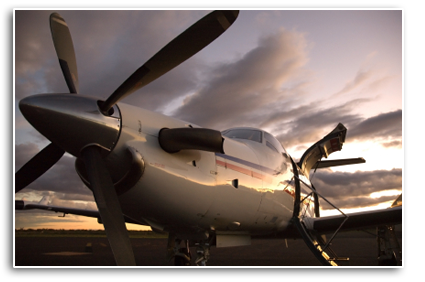What We Deliver

INITIAL TRAINING
The initial training course will typically span 3 to 5 days, with time split between the ground and flight training. You can expect to cover in detail the aircraft systems, limitations, and emergencies (abnormal conditions), along with FAR’s and real-world operational considerations and aircraft servicing. The initial course provides approximately 10 hours in-aircraft training (if required) per our syllabus. If your insurance underwriter requires additional dual instruction, individual days can be added, with about 5 flight hours per day optimum.
A test will be administered at the end of the course containing questions specific to your aircraft, FAR’s and instrument procedures. In addition, you will receive an Instrument Proficiency Check, Flight Review, high altitude endorsement (if required) and an initial course Completion Certificate.
RECURRENT TRAINING
Our recurrent course will take 2 or 3 days, depending on your aircraft, with time split between the ground and flight training. The course will review aircraft systems, limitations, and emergencies (abnormal conditions), along with FAR’s and real-world operational considerations and aircraft servicing. We will also review any areas that you wish, be it systems or operational. The recurrent course provides approximately 7 hours in-aircraft training per our syllabus (if required).
A test will be administered at the end of the course containing questions specific to your aircraft, FAR’s and instrument procedures. In addition, you will receive an IPC, (B)FR, high altitude endorsement, if needed, and a recurrent course Completion Certificate.
For both Initial and Recurrent training, instruction typically runs from 8:00 AM to 5:00 PM with a break for lunch. Adjustments can be made based on weather or your work requirements.
INSTRUMENT PROFICIENCY CHECK (IPC) / FLIGHT REVIEW (FR), HIGH ALTITUDE ENDORSEMENT
Most insurance underwriters will require that you have an IPC during the course of your initial and recurrent training. In fact it is a good idea to do so as it will reset your currency date for acting as PIC on an IFR flight plan.
In addition to the IPC you will also receive a Flight Review provided that you meet all the requirements during your training. If you have never had a High Altitude Endorsement, and it is required for the aircraft your are training in, then you will receive the ground and flight training necessary for that endorsement. To complete the Instrument Proficiency Check you must meet the requirements as set forth in the Practical Test Standards (Instrument Rating or ATP as applicable to your certificate). In order to complete the Flight Review you will need to meet the requirements of FAR Part 61 as it relates to the Flight Review.
A FEW WORDS ABOUT SINGLE ENGINE OPERATIONS…
If you are training in a multi-engine aircraft, you will be asked to perform the single engine maneuvers as required to meet the standards for the IPC and FR. The instructors at AFTS have a great deal of experience operating the aircraft in which we train and understand the careful way in which you want to and should handle your aircraft. Therefore, when we plan to perform single engine operations, ample time is provided to fully brief and review the procedures ahead of time – at no point will an engine be shut down during your training.
While we feel that while handling the aircraft on one engine is very important (and could be accomplished safely), from a liability standpoint, we cannot do so. Our INSTRUCTION SOP mandates that no simulation of an engine failure will take place between rotation speed and 500’ AGL. Specific to piston engine aircraft training, we will ensure that we are not shock cooling the engine, while at the same time ensuring that the pilot is safe and proficient in single engine operations.
Overall, our focused goal is training initial and recurrent pilots to perform the proper procedures and so properly handle any situation that arises. That pilot, in the event of a real emergency, will safely revert to those proper procedures.
